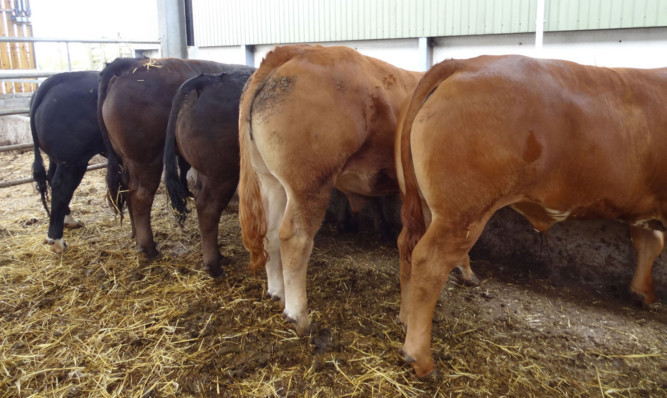Farm-gate beef prices have shown a significant recovery since hitting a low point at the beginning of July, according to Stuart Ashworth, Quality Meat Scotland’s head of economics services.
Although prices have recently shown signs of stabilising, they have been trading approximately 30p/kg higher in October than in late June/early July.
Nevertheless, they remain around 8-9% lower than last year.
“The latest slaughter data for Scotland showed that, in September, the prime cattle kill was up by 2% year-on-year the fifth consecutive month of increase,” said Mr Ashworth.
“With carcase weights running well ahead of last year’s levels, this will have added to the volume of beef on the market.”
The UK kill and carcase weights were also higher in September, leading to a 3% increase in prime beef on the market compared with 12 months before.
“More recently, the number of prime cattle reaching GB price-reporting abattoirs has been up by 5-10%,” said Mr Ashworth.
“Meanwhile, in the Irish Republic, slaughterings at export plants were up by more than 10% in the first half of October.”
Overseas trade volumes will also have been having an impact on market supplies.
The latest UK data from HMRC relates to August.
“Compared with a year earlier, import volumes were 6% higher at nearly 20,000 tonnes as a near-10% increase in fresh beef imports more than offset a 2% decline in frozen beef,” said Mr Ashworth.
On the export side, UK sales were a quarter higher than a year earlier.
However, a stronger sterling against the euro placed downwards pressure on export prices and the average value per tonne fell 12% to £3,400.
“As a consequence, the export trade is likely to have been less profitable,” said Mr Ashworth.
“Adjusting UK production for overseas trade indicates that there was around 8% more beef on the market in August.
“Therefore, with the British Isles well supplied with beef, producer prices have remained below last year’s levels.”
According to Mr Ashworth, traditionally producer prices have tended to reach their annual low point in July and August due to lower demand through the peak holiday season, before picking up through September and into early October as the weather changes.
The considerable lift in the market over this period of 2014 suggests a more significant increase in demand this year.
“The market then tends to cool slightly in late October as increased numbers of cattle are delivered to the abattoir,” Mr Ashworth said.
“About this time, many producers will be beginning to house cattle for the winter, and any animals carrying a reasonable and adequate level of finish will be sent to the abattoir rather than risk the drop in body condition or temporary slowing of growth rates that can occur when animals are first housed.
“As November progresses, the market then tends to rise due to the Christmas trade.”
However, Mr Ashworth said if lower feed costs and producer prices continue to encourage producers to add weight to maximise the sales revenue per head, heavier carcases may well offset lower throughputs in terms of the volume of beef on the market.
Furthermore, larger carcases are not demanded by the retailer and consumer, particularly in the run-up to Christmas, because they produce steaks and roasting joints that are too large.
“Looking slightly further forward, the signs from the supply side are tending to favour the producer,” said Mr Ashworth.
“With calf registrations falling sharply in 2013, it seems likely that supplies will tighten in 2015 as these cattle reach the market.”
He said on the demand side there is less pressure on retailers to raise prices and this should help support consumption.
“The signs have been more promising on this front, with the latest GB household consumption data from Kantar Worldpanel showing that sales volumes increased by 4% year-on-year in the 12 weeks to mid-September as retail price inflation slowed.
“The sales breakdown showed higher sales at the premium end, with the best quality roasts and steaks rising strongly.”
